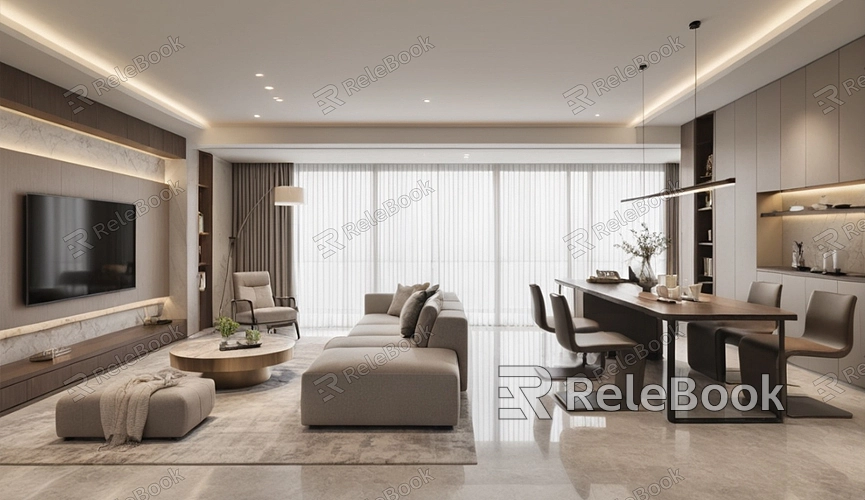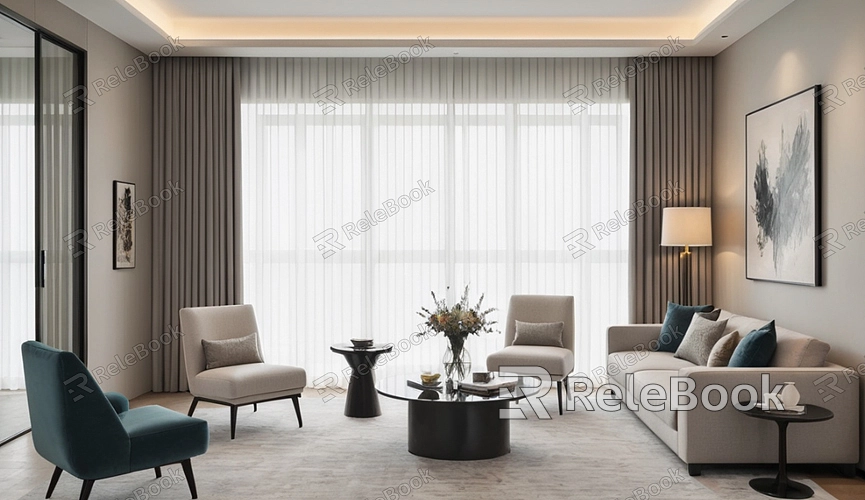What is Depth of Field 3D Modeling?
Depth of Field 3D Modeling is an important concept in computer graphics, involving the simulation of depth of field effects within a three-dimensional environment. Depth of field, also known as focus effect, is a key element in photography and visual arts used to simulate the blur level of objects in the foreground and background, thereby creating a sense of spatial depth and layering. With technological advancements, this effect has been integrated into 3D modeling to enhance the realism and immersion of virtual scenes. This article will explore what Depth of Field 3D Modeling is, how it is achieved, and its applications in modern computer graphics.

Basic Concept of Depth of Field
Depth of field refers to the variation in clarity of different parts of an image. Simply put, it describes the blur effect from the foreground to the background of a picture. The clarity of the foreground and background is influenced by the camera’s aperture size, focal length, and shooting distance. In 3D modeling, simulating this effect can make virtual scenes more realistic and add a sense of depth.
How to Achieve Depth of Field in 3D Modeling
Achieving depth of field in 3D modeling typically involves two main steps: setting up the depth of field effect and adjusting rendering parameters.
Firstly, designers need to configure the depth of field effect in their 3D software. This usually involves selecting appropriate camera settings, such as aperture size and focal length. The aperture determines the range of depth of field; a larger aperture results in a shallower depth of field, making the foreground and background more blurred. The focal length affects the depth of the field’s depth, with longer focal lengths creating a more pronounced depth of field effect.
Secondly, adjusting rendering parameters is essential. Modern 3D rendering engines often come with built-in depth-of-field simulation features. By tweaking these parameters, designers can simulate natural depth of field effects during image rendering.

Applications of Depth of Field in 3D Modeling
Depth of Field 3D Modeling is widely used in various fields, including film production, game development, and virtual reality.
In film production, depth of field can enhance the artistic and visual impact of a scene. For example, in a movie, depth of field can help focus the viewer’s attention on the main character while blurring the background, thereby highlighting the character’s emotional expression.
In game development, depth of field not only improves the visual effects but also enhances player immersion. By using depth of field, game developers can guide the player’s gaze and create more layered game environments, making the game world feel more vibrant and realistic.
In virtual reality, depth of field helps construct a more convincing virtual environment. Given that virtual reality demands high levels of immersion and realism, the application of depth-of-field effects can strengthen spatial awareness within the virtual world, making the user experience more natural and comfortable.
Techniques and Tools for Implementing Depth of Field
Achieving high-quality depth-of-field effects requires not only technical know-how but also a degree of artistic skill and experience. Here are some techniques and tools for implementing depth-of-field effects:
Camera Settings: Understanding and configuring camera settings like aperture, focal length, and distance is fundamental to achieving depth-of-field effects.
Rendering Engines: Using professional rendering engines, such as V-Ray, Arnold, or Cycles, which offer powerful depth-of-field simulation capabilities.
Post-Processing: After rendering, depth of field effects can be further refined through image editing software to enhance the final effect's precision.
Depth of Field 3D Modeling is a crucial technique in computer graphics that simulates real-world depth of field effects to enhance the realism and layering of virtual scenes. Understanding how to implement and apply depth-of-field effects can significantly improve visual effects and user experience. We hope this article has provided you with a clearer understanding of Depth of Field 3D Modeling. For more high-quality 3D models and textures, visit the Relebook website for downloads.
FAQ
Does Depth of Field 3D modeling require high computer performance?
Yes, depth-of-field 3D modeling can increase rendering complexity and require significant computer performance, especially when dealing with high-resolution images. A powerful processor and graphics card are often necessary to support high-quality rendering effects.
How do I choose the right aperture size for achieving depth of field effects?
The choice of aperture size depends on the desired depth of field effect. A larger aperture (smaller f-number) results in a shallower depth of field, making the background more blurred, while a smaller aperture (larger f-number) provides a deeper depth of field, keeping more of the image in focus.
Does all 3D software support depth-of-field effects?
Most modern 3D software and rendering engines support depth-of-field effects. However, the methods and quality of implementation can vary between different software and engines. Choosing the right software and engine depends on your specific needs.
How is the depth of field achieved in virtual reality?
Achieving depth of field in virtual reality requires specialized VR rendering engines that provide depth-of-field simulation features. Additionally, consideration must be given to the performance of VR devices and user experience to ensure that the effect is natural and comfortable.

